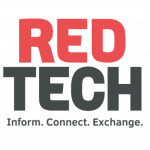MECHELEN, Belgium — Radiogroep recently hosted its first networking event — to highlight its services and meet new clients — at the Thomas More University of Applied Sciences. The company set up workshops and live demonstrations of a line of products, including Telos Alliance’s Axia IQ, Quasar and Forza (with local distributor Triple Audio), AeroAudio headphone amplifiers, Power Studio playout software, Canon PTZ cameras and Luminex switches. “The attendance exceeded our expectations — exhibitors and the audience were enthusiastic about the set-up,” commented radio engineer Tijn Morlion.
After the product presentations and demos, Radiogroep invited the participants to an exclusive tour of the university’s radio department, led by Program Manager Tom Rumes. “Our Bachelor of Applied Audiovisual Communication course for graduate students has existed for quite some time for TV and non-fiction production,” explained Rumes. “Upon the request of the radio sector, we launched the radio department five years ago.”
Because our students already have bachelor’s degrees, the program concentrates on radio production and live radio.
Program Manager Tom Rumes
The new program rapidly met with enthusiasm, and leading radio personalities from national and commercial broadcasters boarded as lecturers. “Because our students already have bachelor’s degrees, the program concentrates on radio production and live radio. We include audio post-production, location radio and podcasting,” continued Rumes.
More than 50 students apply for the program every year, but only 20 are accepted. Rumes emphasized that the aim is to have a diverse mix of students, both geographically and demographically, as well as in their learning backgrounds. Every student participates in an intake interview, including a voice assessment, to determine whether they will be channeled into radio presentation or radio production.
Axia-based set-up
Radiogroep installed the university’s radio infrastructure, consisting of a main news studio, a recording and podcast studio and a mobile broadcast set. Thomas More’s technicians built the 16 production cells and the podcast studio. All the radio studios use Power Studio radio automation software, and each fixed studio has a Telos VXs telephone hybrid. Each studio has three RØDE Broadcast microphones and Aero Audio HPAMP headphone amplifiers. “We‘re currently upgrading the voice processing with Symetrix Prism voice processors,” said Lenn Melotte, director of Radiogroep. “They’re perfect for educational purposes.”
The main radio studio uses an Axia QOR.16 console engine. Melotte said it will be upgraded to an Axia StudioCore. “The StudioCore also has fewer limitations on the number of Livewire channels — a big step ahead for the radio program,” said Melotte. Also, the main studio’s imaging and branding will be upgraded for visual radio.
Organic growth
Thomas More’s radio studios grew organically every year. “We started with Skype as a telephone system, then invested in a more professional one,” explained technical engineer Valentijn Horemans. “The main studio was equipped with visual radio in 2021 using Visual Radio Assist software with Birddog P200 cameras and auto cutting using auto detection. We opted for Power Studio playout software because it allows us to work with studios simultaneously in either live or recording mode.”
ZOOmedia, the Thomas More content and experience platform, has a 24/7 streaming radio channel, with content provided by students of all programs. “We opted for streaming because of budgetary reasons. We concluded a deal with the author’s rights group, Sabam — it’s crucial that students can choose which music they use,” said Horemans.
All presenters work in a self-op setup, bringing education beyond hosting a radio show. “Our location radio studio is used several times a year,” Horemans continued. “The equipment is packed in flight cases, and we travel to various events.”
What makes Thomas More’s media program unique is the university’s “Ali Baba’s cave” — the Pro Media Lab, packed with numerous sets of audiovisual recording equipment, podcast-sets and RØDECasters, Tascam and ZOOM F3 and F6 recorders and editing equipment. “We have everything available for the students’ assignments,” Rumes said. “Our Pro Media Lab warehouse is open all week, and we look at some 6000 lendings per year.”
Based in Antwerp, Belgium, the author began hosting a weekly program at a local radio station in 1980. He then joined the Dutch-language national broadcaster VRT as a reporter and music programmer. He has worked as a freelance writer for various publications, including national press, industry publications and magazines since 1985.
This story originally appeared in the July/August 2025 edition of RedTech Magazine.
These stories might interest you
A glimpse inside the RedTech Summit 2025: Ideas, insights and connections

